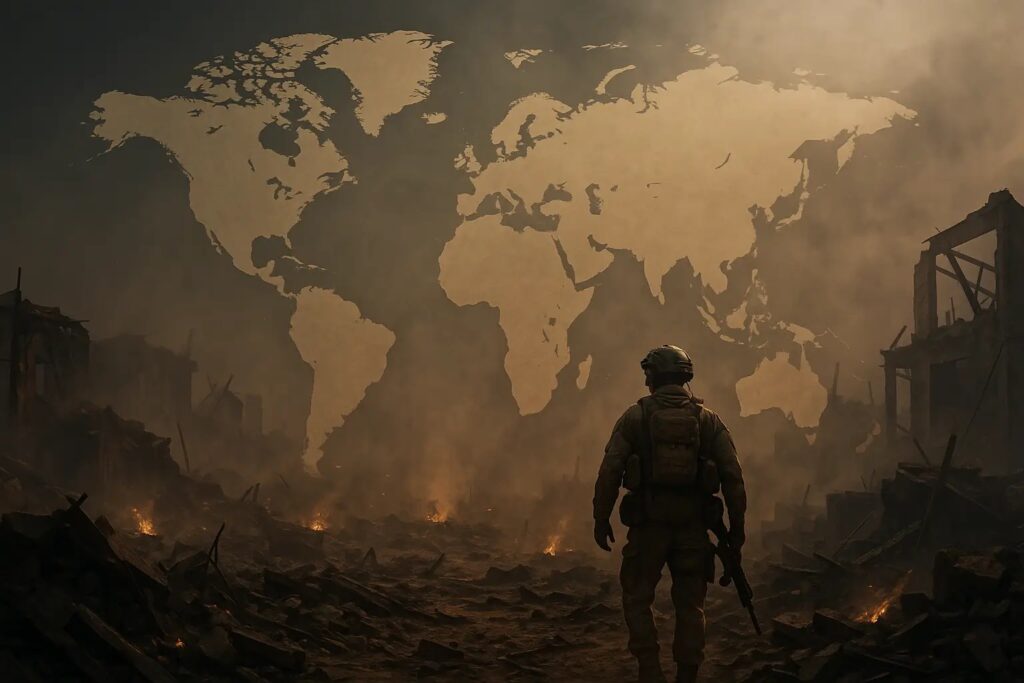Countries at War in 2025: A Global Overview
In 2025, numerous nations are engulfed in conflicts, ranging from civil wars to international disputes. These wars have led to significant casualties and humanitarian crises. This article provides an in-depth look at the countries currently at war, the nature of these conflicts, and their impact.
Top Countries by Conflict-Related Casualties in 2024
Based on data from the Armed Conflict Location & Event Data Project (ACLED), the following countries experienced the highest number of conflict-related deaths in 2024:
1. Ukraine – 400,000 Casualties
Includes 60,000–100,000 soldiers killed and 300,000+ wounded since Russia’s 2022 invasion, with major losses during Bakhmut, Avdiivka, and 2025’s Kharkiv offensives.
2. Palestine – 56,000 Casualties
Since October 7, 2023, Gaza’s Health Ministry reports approximately 56,000 Palestinians killed and 130,000 injured, with around 80% civilians—mainly women, children, and the elderly—by mid-June 2025.
3. Myanmar – 9,000 Casualties
Since the 2021 coup, approximately 9,000–10,000 people have been killed in the ongoing civil war by mid‑2025, including at least 6,600 civilians killed in air‑ and artillery strikes and rebel attacks, plus thousands more from military and resistance forces
4. Sudan – 150,000 Casualties
Since the April 15, 2023 civil war began, estimated deaths—including combat, famine, disease, and siege-related fatalities—reach around 150,000, with tens of thousands more wounded
5. Ethiopia – 300,000 Casualties
Comprehensive estimates since the 2020 Tigray war indicate 162,000–378,000 deaths, including civilians (up to 300,000), plus thousands injured and displaced by continued conflict in Amhara, Oromia, and Tigray regions.
6. Iran – 974 Casualties
Strikes from Israel in June 2025 killed approximately 974 people, including IRGC commanders, nuclear scientists, and hundreds of civilians. Around 3,500 were injured.
7. Israel – 29 Casualties
Iranian missile and drone attacks in the same conflict killed around 29 people in Israel and injured over 3,200, mostly civilians.
Other Notable Conflicts
1. DR Congo – 42,000 Casualties
Violence from the M23 rebellion and inter-ethnic massacres since 2022 has killed around 42,000, with over 7 million displaced in eastern Congo.
2. Somalia – 21,000 Casualties
Al-Shabaab insurgency and counterterrorism operations have caused over 21,000 deaths, including 571+ killed in 2025’s Shabelle region offensive alone.
3. Nigeria – 20,000 Casualties
Armed banditry and jihadist insurgency (Boko Haram & ISWAP) have left ~20,000 dead since 2022 across Borno, Zamfara, Kaduna, and Plateau states.
4. Yemen – 400,000 Casualties
UN and WHO estimate Yemen’s civil war has caused ~400,000 deaths—60% due to indirect causes like famine and disease, 40% combat-related.
5. South Sudan – 3,000 Casualties (2025 only)
Renewed factional fighting since March 2025 around Malakal and Upper Nile has killed over 3,000 and displaced 125,000+.
6. India–Pakistan (Kashmir) – 220 Casualties
April–May 2025 cross-border conflict (“Operation Sindoor”) killed ~220 people—soldiers and civilians—before ceasefire resumed mid-May.
Understanding the Nature of These Conflicts
Civil Wars
Countries like Myanmar, Sudan, and Ethiopia are embroiled in civil wars, characterized by internal divisions and struggles for power.
Terrorist Insurgencies
Nations such as Nigeria, Burkina Faso, and Mali face persistent threats from terrorist groups aiming to destabilize governments and communities.
International Conflicts
The Russo-Ukrainian War and the Israel-Palestine conflict represent international disputes with significant global implications.
Drug Wars
Mexico’s ongoing battle against powerful drug cartels continues to claim thousands of lives annually.
The Humanitarian Impact
These conflicts have led to massive displacement, with millions seeking refuge within and outside their countries. Infrastructure destruction hampers access to essential services, and economies suffer due to prolonged instability.
Global Response and Outlook
International organizations and governments are striving to mediate and provide humanitarian aid. However, achieving lasting peace requires addressing the root causes of these conflicts, including political, ethnic, and economic disparities.
Check More:
- What Is the Golden Dome Defense System and Why Is the U.S. Alarmed Enough to Deploy Such a Massive Shield?
U.S.-China Conflict in 2025? A Realistic Look at Rising Global Tensions

